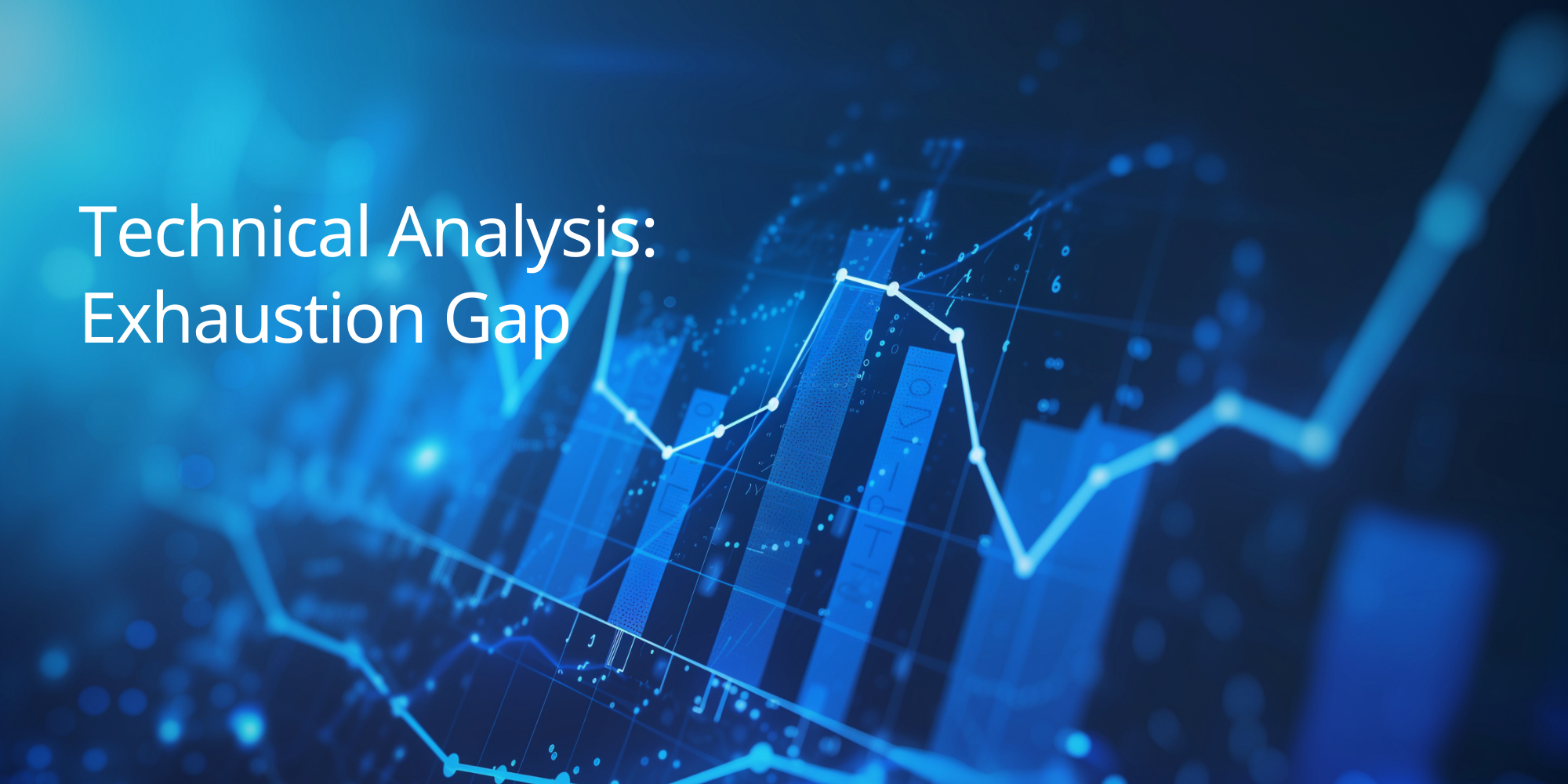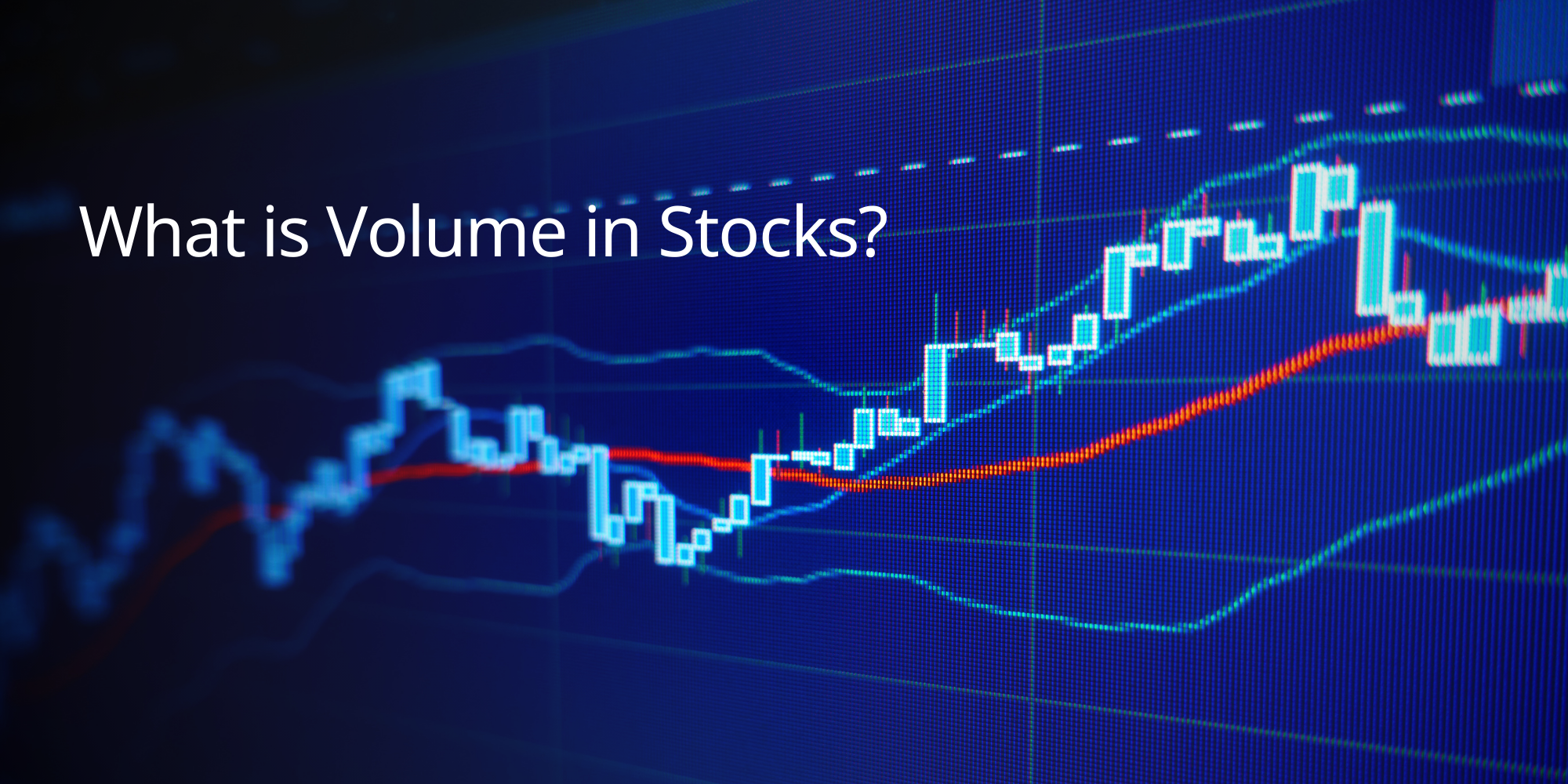Technical Analysis: Exhaustion Gap – Definition, How it Works, Types, Calculation, and Trading
Want to anticipate when a strong trend is losing steam? Exhaustion gaps can offer important clues. These gaps typically appear near the end of an extended move and often signal a weakening trend or an impending reversal.
In this comprehensive guide from TradeSmart, we’ll explore:
- What exhaustion gaps are and how they differ from other types of gaps
- The market psychology behind exhaustion gaps
- How to spot them on a chart and interpret their signals
- Practical strategies for trading around exhaustion gap setups
Whether you’re trading forex, stocks, or indices, recognising exhaustion gaps can help you avoid late entries and position more effectively for reversals.
What is an Exhaustion Gap?
An exhaustion gap is a gap in a price chart that occurs at the end of a trend, signaling that the trend is losing momentum and might be about to reverse. It’s often seen as a warning sign that the current trend is becoming exhausted.
Key Characteristics of an Exhaustion Gap:
- Occurs at the End of a Trend: Unlike runaway gaps, which occur in the middle of a trend, exhaustion gaps typically appear after a prolonged price move, either up or down.
- Gap in Price: There’s a clear gap between the closing price of one period and the opening price of the next period.
- High Volume: Exhaustion gaps are often accompanied by high trading volume, which can indicate a final surge of buying or selling pressure before the trend reverses.
- Trend Reversal: The exhaustion gap often marks a turning point in the market, where the price is likely to reverse direction.
How Exhaustion Gaps Form
Exhaustion gaps typically form when the last wave of buyers or sellers enters the market, causing a final surge in price. However, this surge is not sustained, and the price soon starts to reverse as the momentum fades.
Identifying Exhaustion Gaps
It’s important to be able to distinguish exhaustion gaps from other types of gaps. Here’s how to identify an exhaustion gap:
- Look for a Strong Trend: Exhaustion gaps typically occur at the end of a strong and extended trend, either an uptrend or a downtrend. The trend should be visible on multiple timeframes (daily, weekly, monthly).
- Identify the Gap: Look for a gap in the price chart that occurs in the same direction as the prevailing trend. This gap represents a sudden jump or drop in price, often accompanied by high volume.
- Analyze Volume: Pay close attention to the volume during and after the gap.
- High Volume During the Gap: This can indicate a final surge of buying or selling pressure before the trend reverses.
- Decreasing Volume After the Gap: This suggests that the momentum behind the trend is weakening.
- Look for a Reversal: After the gap, watch for signs of a price reversal. This could be a break of a trend line, a change in momentum indicators, or the formation of a reversal candlestick pattern.
- Confirm the Exhaustion Gap: An exhaustion gap is often confirmed by a subsequent gap in the opposite direction of the initial trend. This confirms that the trend has reversed.
Example:
Imagine a stock that has been in a strong uptrend for several months. The price suddenly gaps higher on high volume, but then the volume starts to decline, and the price begins to fall. A few days later, the price gaps down, confirming the exhaustion gap and signaling a potential reversal to a downtrend.
Advantages of Trading Exhaustion Gaps
Here are some of the key advantages of exhaustion gaps:
- High Probability of Success: When identified correctly, exhaustion gaps can have a high probability of success. This is because they often signal a significant shift in market sentiment and a potential trend reversal.
- Clear Signals: Exhaustion gaps provide clear and identifiable signals. They are typically characterized by a gap in price, high volume, and a subsequent reversal in the trend. This makes them relatively easy to spot on a chart, even for less experienced traders.
- Backtesting Opportunities: Exhaustion gaps can be effectively backtested using historical data. This allows traders to analyze the performance of exhaustion gap trading strategies and refine their approach to improve profitability.
- Early Warning of Trend Reversals: Exhaustion gaps can provide early warning signs of potential trend reversals. This allows traders to exit existing positions or even enter new trades in the opposite direction of the previous trend.
- Risk Management: By identifying exhaustion gaps, traders can set appropriate stop-loss orders and manage their risk more effectively. This helps to protect capital and avoid large losses during trend reversals.
Limitations of Exhaustion Gaps
While exhaustion gaps can be valuable signals for traders, it’s important to be aware of their limitations:
- Not a Standalone Indicator: Exhaustion gaps should not be used as a standalone indicator for making trading decisions. They are most effective when used in conjunction with other technical indicators, price action analysis, and market context. Relying solely on exhaustion gaps can lead to misinterpretations of market conditions and potentially unprofitable trades.
- Risk of False Signals: Exhaustion gaps can sometimes be misleading. Not all gaps that appear at the end of a trend will result in a reversal. The price might continue to move in the same direction, leading to losses for traders who have entered trades based on a false exhaustion gap signal.
- Difficult to Identify in Real-Time: It can be challenging to identify exhaustion gaps in real-time, as it’s not always clear whether a gap is an exhaustion gap or a continuation gap (runaway gap). This requires careful analysis of price action, volume, and other indicators.
- Not Ideal for All Market Conditions: Exhaustion gaps are most effective in trending markets where there are clear and sustained price movements. In choppy or sideways markets, they might not be as reliable.
Mitigating the Limitations
To overcome these limitations, traders can:
- Combine with Other Indicators: Use exhaustion gaps in conjunction with other technical indicators, such as moving averages, trend lines, or momentum oscillators, to confirm signals and filter out false signals.
- Consider Market Context: Always interpret exhaustion gap signals in the context of the overall market environment. Consider factors such as news events, economic data releases, and the broader market trend when making trading decisions.
- Practice Risk Management: Use appropriate risk management techniques, such as stop-loss orders and position sizing, to limit potential losses.
TradeSmart encourages its clients to use exhaustion gaps as part of a comprehensive trading strategy. By understanding its limitations and combining it with other analytical tools, traders can make more informed decisions and improve their trading outcomes.
Why Exhaustion Gaps Matter in Technical Analysis
Exhaustion gaps are important in technical analysis because they can provide valuable clues about potential trend reversals. Here’s why they matter:
- Signal Trend Reversals: Exhaustion gaps often occur at the end of a prolonged trend, signaling that the trend is losing momentum and might be about to reverse. This can help traders anticipate major shifts in the market and adjust their positions accordingly.
- Reflect Changing Sentiment: These gaps can indicate a shift in market sentiment, from bullish to bearish or vice versa. The high volume associated with exhaustion gaps often reflects a surge of selling pressure (in an uptrend) or buying pressure (in a downtrend), further supporting the potential for a reversal.
- Provide Trading Opportunities: Exhaustion gaps can create trading opportunities for those who can identify them correctly. For example, in an uptrend, an exhaustion gap might signal a good time to sell or even initiate a short position.
- Improve Risk Management: By recognizing exhaustion gaps, traders can set appropriate stop-loss orders and manage their risk more effectively. This helps to protect capital and avoid large losses during trend reversals.
Timing Your Trades with Exhaustion Gaps
Timing is crucial when trading exhaustion gaps. Here’s when you can maximize your chances of success:
- After the Gap Closes: The best time to trade an exhaustion gap is often after the initial gap closes. This means waiting for the price to retrace and fill the gap, confirming that the initial momentum has faded and a reversal is likely.
- Overbought/Oversold Conditions: Exhaustion gaps are most reliable when they occur in overbought or oversold market conditions. This suggests that the market has reached an extreme and is more likely to reverse.
- Confirmation with Other Indicators: Use other technical indicators, such as the Relative Strength Index (RSI) or Moving Average Convergence Divergence (MACD), to confirm the potential reversal signaled by the exhaustion gap.
- Volume Analysis: Pay attention to volume during and after the gap. High volume during the gap and decreasing volume after the gap can confirm the exhaustion gap pattern.
Why Timing Matters:
- Confirmation of Reversal: Waiting for the gap to close helps confirm that the trend is indeed reversing and not just experiencing a temporary pullback.
- Reduced Risk: Trading in overbought or oversold conditions, and with confirmation from other indicators, can reduce the risk of false signals and improve the probability of a successful trade.
Distinguishing Exhaustion Gaps from Other Gap Types
In technical analysis, several types of gaps can appear on a price chart. It’s essential to distinguish exhaustion gaps from other gap types to understand their unique implications.
Key Differences
- Trend Context: Exhaustion gaps occur at the end of a trend, signaling a potential reversal. Other gaps, like breakaway gaps or runaway gaps, occur at the beginning or middle of a trend, respectively.
- Volume: While exhaustion gaps often have high volume, the volume might start to decrease after the gap forms, indicating weakening momentum. Breakaway and runaway gaps typically have sustained high volume after the gap, confirming the strength of the new trend.
- Position within the Trend: Exhaustion gaps appear at the end of a trend, while breakaway gaps occur at the beginning, and runaway gaps appear in the middle.
- Predictive Potential: Exhaustion gaps signal a potential trend reversal, while breakaway and runaway gaps signal trend continuation.
Comparing Exhaustion Gaps to Other Gap Types
- Breakaway Gaps: These gaps occur at the beginning of a trend, signaling a break from a previous consolidation or trading range.
- Runaway Gaps: These gaps occur in the middle of a trend, confirming its strength and potential for continuation.
- Common Gaps: These are smaller gaps that occur within a trading range or during periods of consolidation. They often have less significance than exhaustion gaps, breakaway gaps, or runaway gaps.
Conclusion
Exhaustion gaps serve as key indicators of potential trend reversals, alerting traders that momentum may be fading. By learning to spot and interpret these gaps, you can reduce risk, improve your timing, and make more strategic trading decisions.
At TradeSmart, we give you the tools and resources to make the most of the exhaustion gap analysis:
- Identify exhaustion gaps and distinguish them from breakaway and runaway gaps
- Understand the reversal signals that these gaps may indicate
- Apply them within structured trading strategies
- Manage risk through disciplined entry, exit, and stop-loss planning
Ready to strengthen your trading strategy?
- Open a TradeSmart account and access professional trading tools
- Practice gap analysis risk-free with a demo account
- Start trading live with a deposit as low as $50
Visit TradeSmart.com today and unlock the full potential of exhaustion gap analysis in your trading journey.





